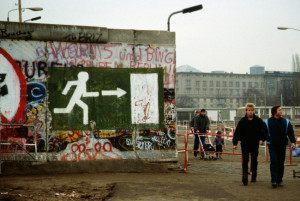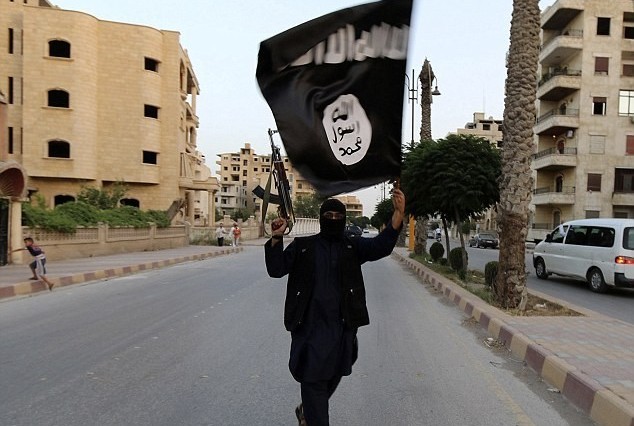by Charles W. Dunne
Eighteen years after the terrorist attacks of September 11, 2001, the United States remains engaged in a multi-front war against a multi-faceted extremist-terrorist threat, much of which emanates from the broader Middle East and North Africa. Although no longer referred to as the “Global War on Terror”—a Bush Administration coinage abandoned during President Barack Obama’s first term—the difference is largely semantic. All three administrations since 9/11 have pursued broadly similar strategies to defeat the threat, and counterterrorism remains at the top of Washington’s foreign policy agenda, as President Donald Trump’s 2017 National Security Strategy makes clear.
There have been some notable successes in the fight. Al-Qaeda (AQ) has splintered and the “caliphate” of the Islamic State (IS) is no more. Both groups have suffered serious leadership losses and their operational capabilities have been degraded.
But America’s war on terror, no matter what it is called, is very far from over. While AQ and IS may have lost much of their ability to mount major mass casualty attacks in the United States and Europe, splinter groups remain a dangerous threat to US interests in the region and to the people who live there. New opportunities for terrorist groups to rebuild and strike back may arise as they take advantage of state weaknesses and ungoverned spaces in Yemen, Syria, the Horn of Africa, and elsewhere.
Of particular concern are the largely hidden costs of the war on terror to the civilian populations in whose midst the war is being fought. The noncombatant death toll of the drone war of the Obama and Trump Administrations, no longer released to the public, has likely reached thousands. And robust US support for authoritarian allies waging their own counterinsurgency wars has often led the United States to ignore severe abuses of civilian populations in the course of armed conflicts and to excuse serious human rights violations committed under the directive of “anti-terrorism” laws. Such abuses by allies, perpetrated with political cover from the American government, not only risk implicating Washington in their transgressions—including war crimes in Yemen—but may compromise the United States’ long-term goals of ameliorating the conditions that fuel violent extremism in the first place.
Successes in the War Against AQ and IS
The high-water mark of al-Qaeda’s terrorist ambitions probably occurred in 2014, when AQ-linked militants attempted to seize the Pakistani frigate PNS Zulfiqar in an alleged plot to attack an American warship in the Indian Ocean and provoke a military confrontation between the United States and Pakistan. (An unconfirmed report suggested there may have been a nuclear weapon on board the Zulfiqar at the time, casting the attack in an even more ominous light.)
The attempt failed, but even by then it was clear that AQ’s global ambitions had suffered a series of harsh setbacks. The Obama Administration’s AfPak (Afghanistan-Pakistan) strategy had succeeded in eliminating AQ’s core leadership through a relentless campaign of drone strikes and intelligence operations, culminating later in the raid that killed Osama bin Laden in 2011. His son Hamza was killed, too, in a US attack sometime this year. Bin Laden’s deputy, Ayman al-Zawahiri, now AQ’s nominal leader, remains in hiding. The group has lost much of its capacity to mount attacks in the United States and no longer ranks among the top terrorist threats here, a distinction that increasingly belongs to homegrown right-wing extremists and “lone wolf” attackers, often of indeterminate ideology.
The Islamic State has suffered similar sweeping reversals. It conquered vast swaths of territory in Syria and Iraq beginning in 2014, for a time threatening to overrun Baghdad itself and shaking the foundations of the modern Middle East state system. The IS leadership proclaimed a new “caliphate” on June 29 of that year, with the Syrian town of Raqqa as its capital. At its height, the caliphate controlled over 38,000 square miles of territory—including vital economic, strategic, and agricultural assets as well as key transportation corridors—stretching from western Syria to eastern Iraq. For a time, IS ruled over nearly 12 million people and built a financial empire worth billions of dollars from illicit oil revenues and criminal enterprises including robbery, kidnapping, and extortion. In addition to the atrocities and terrorist attacks perpetrated in areas under its control, from 2015 to 2018 IS and its affiliates managed to mount spectacular mass-casualty attacks in Paris, Belgium, Istanbul, Baghdad, Egypt, and elsewhere. The US State Department noted in its annual terrorism report in 2015 that IS was becoming a greater threat than al-Qaeda.
American intervention in Syria and Iraq in 2014 gradually began to turn the tide, combining massive airstrikes, drone attacks, and Special Forces raids with supplies, logistics, and intel support to the reorganizing Iraqi Security Forces (which had nearly collapsed under the IS onslaught) and the nominally anti-Assad coalition comprising the Syrian Democratic Forces. Over a period of three years, the Islamic State was forced out of virtually all its territorial conquests. IS lost its self-proclaimed capital city of Raqqa in October 2017, a few months before Iraqi Prime Minister Haider al-Abadi announced that IS had been forced from its last stronghold in Iraq. The Syrian Democratic Forces declared the caliphate finished in March 2019 after its defeat in Baghouz in eastern Syria, the last town it held in the country.
What Has Been Achieved—and What Has Not
There is no denying that US counterterrorism strategy has posted robust victories over al-Qaeda, the Islamic State, and other smaller groups, degrading their operational and leadership capacities and reducing their ability to organize and carry out mass-casualty attacks far from their bases of operation. Overall, incidents of worldwide terrorism have fallen; the 2018 global terrorism report by the Institute of Economics and Peace noted that deaths from terrorism fell by 44 percent over the three previous years, matched by a 42-percent drop in terrorism’s global economic impact.
These successes are far from complete, however. While the main jihadi organizations have been broken into smaller pieces, they are scattered throughout the Middle East, Africa, and South Asia, where governance remains weak and the extremists’ ability to pose a serious threat to states, civilian populations, and US interests on the ground remains strong. These smaller groups are harder to track and eliminate and they have amassed significant influence while embedding themselves in local populations, substantially improving their ability to win “hearts and minds” and inspire attacks on US and allied interests in the region and in Europe.
Daniel Byman, writing for the West Point Combating Terrorism Center, puts it this way: jihadi groups “can comfort themselves knowing that their overall sphere of activity has expanded, the enduring weakness of regimes in the Muslim world will give them considerable operational space, and problems with Muslim integration in Europe may present new opportunities.” Indeed, as retired US Lieutenant General Michael Nagata, former director of strategic operational planning at the National Counterterrorism Center, remarked recently, “America now confronts more terrorists today than it did on 9/11.”
Nor have IS and AQ themselves entirely gone away. Prior to the destruction of its caliphate, IS made plans to go underground in the event of its territorial defeat, stockpiling arms and establishing secret networks and safe houses in preparation to wage long-term guerrilla-style campaigns in Iraq and Syria. It has now “substantially evolved into a covert network,” the United Nations secretary-general saidearlier this year, and still has 14,000-18,000 armed militants active in the two countries. For its part, al-Qaeda has focused on reconstituting itself in Syria since 2014, building local political influence and military capacity, possibly in preparation for mounting new attacks against the United States and its interests. Idlib province in northwestern Syria has become a safe haven for AQ elements, drawing the military attention of both the United States and Russia.
In addition to the resilience of terrorist movements, certain policy choices by the United States have hampered development of a more comprehensive and effective strategy. To be sure, resources devoted to counterterrorism have increased dramatically overall since the early 2000s, reaching, for example, a peak of 22 percent of discretionary spending in 2008 (16 times more than in 2001) and 14 percent of said spending in 2017 (11 times more than in 2001). However, according to Nagata, the vast bulk of counterterrorism resources, manpower, and policy support is allocated to military and law enforcement responses to the terrorism phenomenon, with considerably less earmarked for arguably more impactful tactics, such as denying resources, interdicting travel, and preventing extremist indoctrination and recruitment. This imbalance amounts to treating the symptoms and not the disease.
American counterterrorism policies have been rendered less effectual not just by lack of resources devoted to preventing radicalization and to non-kinetic disruption of terrorist networks and logistics, but by a larger failure to address the conditions that create fertile ground for violent extremism in the first place: highly unequal economic opportunity (compounded by corruption and crony capitalism), large-scale human rights abuses, and repressive political systems that tolerate little dissent. These and other problems constitute broad failures of governance that have deepened critical deficits in freedom, gender equity, knowledge, human security, and youth opportunity, as documented extensively in the UN’s Arab Human Development Reports, fueling conditions in which extremism thrives. While the United States cannot fix any of these deficits on its own, its failure to place them consistently at the forefront of American diplomatic engagement with the countries of the Middle East remains a weakness in US counterterrorism policy.
Moreover, the United States often fails to appreciate the humanitarian toll of its counterterrorism tactics and the extent to which they can contribute to radicalization and boost terrorist recruitment efforts. The use of drones to attack safe havens and individual extremists is a key example. The Obama Administration transformed the use of drones into a major component of US counterterrorism operations, conducting upwards of 550 attacks in Pakistan, Yemen, Somalia, and other countries from January 2009 to January 2017. President Trump is on pace to surpass that record. The tactic is no doubt effective in eliminating extremist leadership elements at a minimal cost to US military personnel and assets, and the purported surgical nature of such attacks has likely resulted in lower civilian death tolls than might otherwise be expected.
But even a reduced number of noncombatant deaths has proven very costly. In Iraq and Syria alone, the estimated number of dead from US drone strikes through January 2019 ranges from a low of 1,257 (a CENTCOM estimate) to 7,500 (as calculated by the transparency organization Airwars). Complete figures for other theaters in which the United States is active, such as Somalia, Afghanistan, and Yemen, are rough and insufficient, due in no small part to the relative lack of transparency in the Obama Administration’s drone policies and President Trump’s decision in March 2019 to cancel an annual public report on drone strikes, which included figures on civilian casualties. The secrecy and lack of accountability in US drone policy encourage abuse and contribute to conditions that feed violent extremism.
Outsourcing the Fight: The Cases of Saudi Arabia and Egypt
If the lack of public oversight in the drone war and other operational aspects of American counterterrorism strategy should be a matter of serious concern, so should the policy of outsourcing much of Washington’s counterterrorism campaign to authoritarian allies, with limited skepticism and minimal oversight.
The United States has defended a Saudi-led coalition’s campaign against Houthi rebels in Yemen partly because the Houthis are allied with Iran. As importantly, Washington also sees Riyadh as an integral part of (or, at least, as one that pays the price for) its own longstanding war in Yemen against al-Qaeda in the Arabian Peninsula (AQAP). The war has evolved into a deadly stalemate with mounting civilian casualties, a growing humanitarian crisis, and no end in sight.
The Obama Administration initially supported the Saudi intervention in part to prevent AQAP from gaining political momentum by taking the lead in the anti-Houthi fight. Further, the Trump Administration deliberately conflated Washington’s support for the Saudi-led coalition’s actions in Yemen with its own military campaign against AQAP, which has been ongoing since the Bush Administration. The results have been damaging all around. The United States has been accused by the United Nations of possible complicity in coalition war crimes. Its support for corrupt and abusive Yemeni counterterrorism units has left as much as $500 million worth of military equipment unaccounted for. This has also opened the United States to charges that it has deliberately ignored human rights abuses by Yemeni and coalition forces and, because of these policies, helped drive recruitment by al-Qaeda.
Egypt, another close American ally, has been fighting its own war against a Sinai-based affiliate of the Islamic State, Wilayat Sina (Sinai Province), since 2011. Actual military operations are shrouded in secrecy due to a news blackout imposed by Egyptian authorities, but a May 2019 Human Rights Watch report found that Egyptian security forces have engaged in “enforced disappearances, torture, and extrajudicial killings, collective punishment, and forced evictions,” in addition to air strikes that have killed numerous civilians. (Islamist militant groups in Sinai were also sharply criticized by HRW for abuses they carried out.)
Egyptian security forces also stand accused of engaging in a campaign of extrajudicial killings in Cairo and other places in the country beyond Sinai, likewise in the name of fighting terrorism. A Reuters investigation documented 465 killings of accused “terrorists” in hundreds of incidents with the security forces over a period of three and a half years. The killings took place without due process and under deeply suspicious circumstances, according to victims’ families and outside forensic experts. Many of those slain had been disappeared months earlier, probably by security forces, only to turn up dead in what many believe were staged shootouts.
The US State Department acknowledged in its 2018 report on human rights in Egypt that Egyptian security forces engage in a wide range of abuses, including torture and “unlawful or arbitrary killings.” Nevertheless, that same year Secretary of State Mike Pompeo released $195 million in military assistance to Egypt that was previously withheld due to human rights concerns.
Compounding the problem of regime impunity vis-à-vis US policy is the fact that the United States has largely ignored the proliferation of “anti-terrorism” and anti-protest laws that are liberally employed to silence political opponents by applying overly broad definitions of terrorism to include such offenses as insulting government authorities or criticizing official policies. Such laws have been used effectively in Saudi Arabia, Jordan, Egypt, and elsewhere in the region to jail activists, bloggers, and peaceful protesters. The United States rarely—if ever—questions these laws or practices, implicitly accepting the approach as a normal part of counterterrorism strategy.
A Long Road Ahead
American counterterrorism strategy has had many successes, large and small, in the 18 years since 9/11, the most important of which is the prevention of another foreign-origin major attack on US soil. This achievement is due to the huge investments the United States has made in intelligence, kinetic capabilities, alliance building, and advancing technological and tactical capacity. Terrorist groups in the Middle East and elsewhere, however, remain resilient and adaptable and continue to pose threats to American interests overseas and potentially at home. Going forward, the United States must thoroughly evaluate its policy choices and resource allocations to ensure the effective pursuance of the long-term battle to address the extremist-terrorist threats it faces.
Charles Dunne is a Non-resident Fellow at Arab Center Washington DC. To learn more about him and read his previous publications click here. Republished, with permission, from the Arab Center.






National, and international opinion on U.S. positions/actions are almost automatically negative. It has been for decades, and needs to be accepted. Reality, however, measured in terms of material well-being, higher material wealth, and health, of the world has been positive. Much of this is the result of increased productivity, and general security of the world, largely the result of U.S. pursuing its national interest….not bad a record. Others should hope it continues.
Charles Dunne,
Insufficient research and a one sided article. There’s no regional insight or input makes your article very biased.
Who created and supported the original AQ & IS terrorist groups? Who are the current creators and supporters of the new terrorist groups? Which Sheikdoms, states or countries were complicit with the original AQ and ISIS and the new terrorist groups?
I wonder who sponsored this article? The American policy has always been to rewarding the ruthless, corrupt and murdering regimes either by funding or arms or both in the ME for the past 70 years. You are just confirming the continuation of the US policies. Of course the US policies for the NA region has also been the same since 1960’s starting with Algiers, Egypt and Libya were add on at a later time!
Bottom line is that the West, including the US, have received the cheap resources of the regions and have brought NOTHING other than destructions, killing of innocents and homelessness and refugees in these regions!
Do a wide range research before taking about these regions the next time. You will be called out if your research is inadequate and biased!